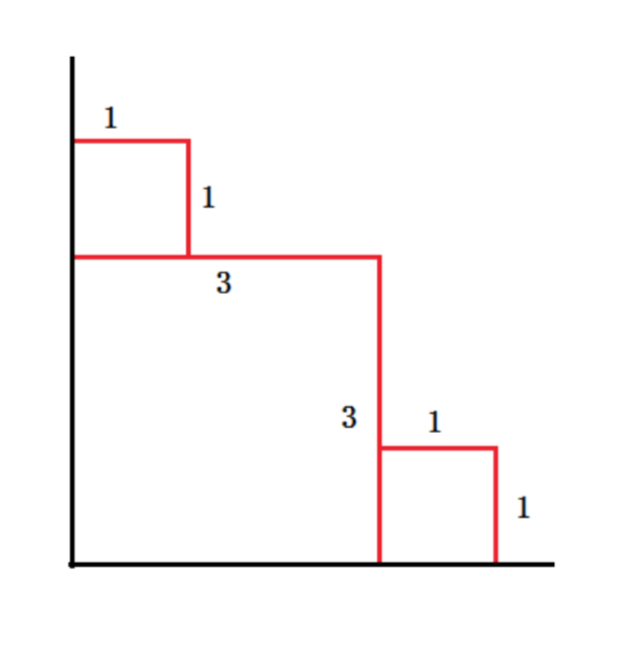There's a beach in the first quadrant. And from time to time, there are sea waves. A wave ( xx , yy ) means the wave is a rectangle whose vertexes are ( 00 , 00 ), ( xx , 00 ), ( 00 , yy ), ( xx , yy ). Every time the wave will wash out the trace of former wave in its range and remain its own trace of ( xx , 00 ) -> ( xx , yy ) and ( 00 , yy ) -> ( xx , yy ). Now the toad on the coast wants to know the total length of trace on the coast after n waves. It's guaranteed that a wave will not cover the other completely.
Input
The first line is the number of waves n(n \le 50000)n(n≤50000).
The next nn lines,each contains two numbers xx yy ,( 0 < x0<x , y \le 10000000y≤10000000 ),the ii-th line means the ii-th second there comes a wave of ( xx , yy ), it's guaranteed that when 1 \le i1≤i , j \le nj≤n ,x_i \le x_jxi≤xj and y_i \le y_jyi≤yj don't set up at the same time.
Output
An Integer stands for the answer.
Hint:
As for the sample input, the answer is 3+3+1+1+1+1=103+3+1+1+1+1=10
样例输入
3 1 4 4 1 3 3
样例输出
10
题意:输入n代表有n波海浪,海浪会有一个范围,冲成一个矩形,会在边缘的地方留下痕迹,如果这波海浪碰到了之前留下来的痕迹,会把它的痕迹所冲掉,然后问最后总共留下来的痕迹有多少
注意;你后面的海浪不可能把之前的一波海浪全部覆盖
思路:首先我们肯定要倒着来访问
比赛时的想法:然后我开始没看到那句后面的不会把前面的浪全部冲掉那一句话,然后我的想法是给每个行列位置置一个浪冲的的最大范围,然后只要用那个最大的范围减中间差值即可
但是后面我写炸了,用的是线段树维护最大冲浪范围,
赛后:我们仔细想想(后面的浪不会把之前的浪全部冲掉这一句话),所以我们只可能出现 (一个比x大,一个比y小), (一个比x小,一个比y大)
我们倒着来,找最近的比他小的数即可,二分找来降低复杂度,
如果有比他小的 那么我们就+他们的差值

如果当前的坐标就是最小的,找不到的时候,那么我们的这个是最小,说明我们的另外一个坐标肯定比他们长,
比他们长的话就加当前长度即可(因为另一边肯定比他长,然后就露出去了)

#include <bits/stdc++.h> using namespace std; long long gao(vector<int> vec) { int sz = vec.size(); set<int>st; long long ans = 0; for (int i = sz-1; i >= 0; i--) {//倒着访问 set<int>::iterator it = st.lower_bound(vec[i]); if (it == st.begin()) {//如果当前的坐标比所有的小,说明另一个肯定比他们大,所以加全部,图二 ans += vec[i]; } else { it--; ans += vec[i] - *it;//图一 } st.insert(vec[i]); } return ans; } int main() { int n; while(scanf("%d", &n) == 1) { vector<int>vec1, vec2; int x,y; while(n--) { scanf("%d%d", &x, &y); vec1.push_back(x); vec2.push_back(y); } cout<<gao(vec1) + gao(vec2)<<endl; } }





 浙公网安备 33010602011771号
浙公网安备 33010602011771号